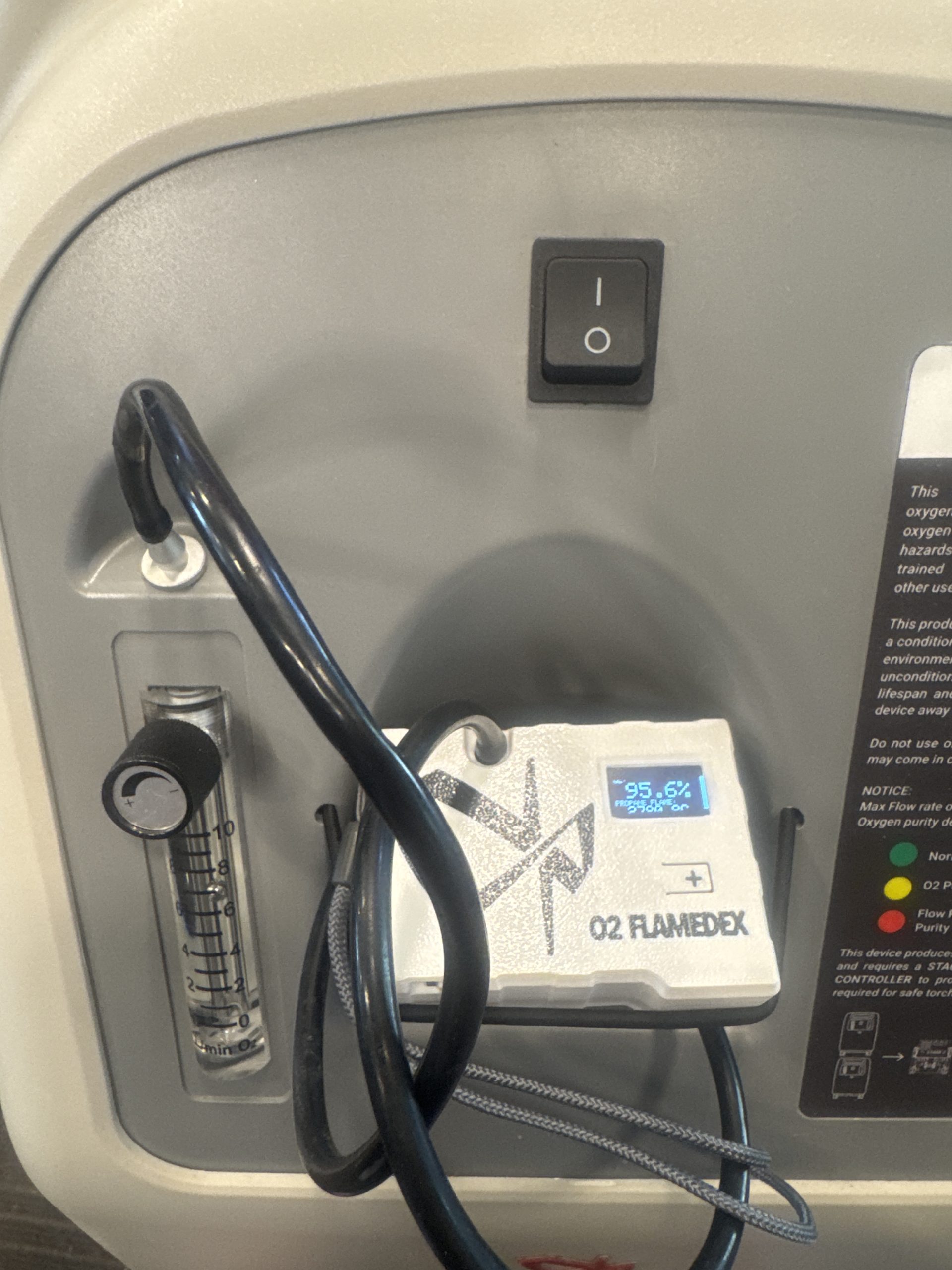Your cart is currently empty!
Category: Education
-

How Pure Can Concentrated Oxygen Get? The Real Limit — and Why PSA Works for Glassblowers
Concentrators make enriched oxygen using PSA technology. There’s a natural question: How pure can PSA/Concentrated Oxygen actually get, and does that matter at the bench?
For glassblowers, oxygen quality shows up in the flame: heat, stability, and how predictably the torch responds when you push your work. Given this importance, why would studios move away from cylinders of 99.9% oxygen to on-site systems built around pressure swing adsorption (PSA or Concentrated Oxygen)?
The Practical Ceiling for PSA Purity is 96.3%
In real-world operation, PSA oxygen generators are designed and specified for about 93–96% O₂. That’s not a marketing number—it’s the accepted performance band you’ll see across technical guidance and medical oxygen programs that use PSA plants.
Why that band? Pushing beyond the mid-90s with PSA quickly forces expensive trade-offs between purity, flow, and stability. Raise purity a couple of points and your available flow typically drops—meaning a larger (costlier) oxygen concentrator system to get the same output.
Why Concentrators (PSA) Can’t Hit 100%: The Argon Problem
PSA beds (zeolites – the stuff inside of oxygen concentrators doing the magic) are excellent at holding back nitrogen while letting oxygen pass. But argon—about 0.9% of ambient air—behaves a lot like oxygen in this process and tends to slip through with it. That’s why most PSA streams top out in the mid-90s: you’ve removed the nitrogen efficiently, but a small fraction of argon remains.
What that means at the torch
For artistic and functional glasswork, 93–96% PSA oxygen is more than hot enough for stable, repeatable flames on common torches. In practice, the bigger wins for glassblowers come from supply consistency and economics: no delivery gaps, no cylinder swaps mid-project, and a predictable cost per hour.
If you’re considering the switch, start by looking at system architecture and how it fits your studio:
- Overview of options: Oxygen Systems
- How the compression stage integrates with concentrators: Stage 2 Features
- Model lineup and scale-up path: Stage 2 Models — with details on Stage 2 SOLO, Stage 2 DUO, and Stage 2 PRO
PSA vs. “near-pure” alternatives
Could you chase 99.5%+? Yes—cryogenic oxygen or multi-stage PSA hybrids can get there, but they come with plant-scale cost, more complex controls, and longer startup dynamics. That’s why PSA is often called the most cost-effective way to get close to pure oxygen at useful volumes without plant-sized equipment. For most glass studios, the mid-90s purity band delivers the best combination of flame performance, uptime, and total cost of ownership.
Sizing your setup for real studio workloads
Two practical steps help you right-size a PSA-based system:
- Quantify your run time and peak draws with the Oxygen Runtime Calculator.
- Cross-check burner requirements using the Lampworking Torch Data.
Once you have a rough profile, match it to a compression model and storage strategy:
- Entry to mid scale compression: Stage 2 SOLO and Stage 2 DUO
- Multi-torch studios: Stage 2 PRO
- Buffering and surge handling: Tanks
- Concentrator first stage (10 LPM each): Stage 1
For specifics on noise, warranty, or common fit questions, see the FAQ and Warranty.
Why this approach scales with you as a professional artist
Your demand may grow—from solo bench time to multi-artist production. PSA is modular by design: add concentrators, expand storage, and let the compression stage handle the duty cycle. That’s the path most studios take to eliminate refill logistics while keeping flame behavior consistent day to day. For a quick orientation to the company and user community, see About Us and Our Artists.
Bottom line
- Maximum practical PSA purity: about 93–96% O₂.
- Reason: argon behaves like oxygen in standard PSA beds, creating a hard limit without costly extra stages.
- Best fit for glassblowers: on-site PSA provides stable, hot flames with far better economics and uptime than cylinder delivery for most studios.
If you want help mapping purity, flow, and storage to your torch lineup, we can put numbers to it and recommend a build. Start here:
Sources for the purity limit and trade-offs
- WHO / technical guidance on PSA output: oxygen 93% ± 3% and performance considerations. Iris+1
- Argon carry-through in PSA and practical purity ceilings near ~95%. nzic.org.nz+1